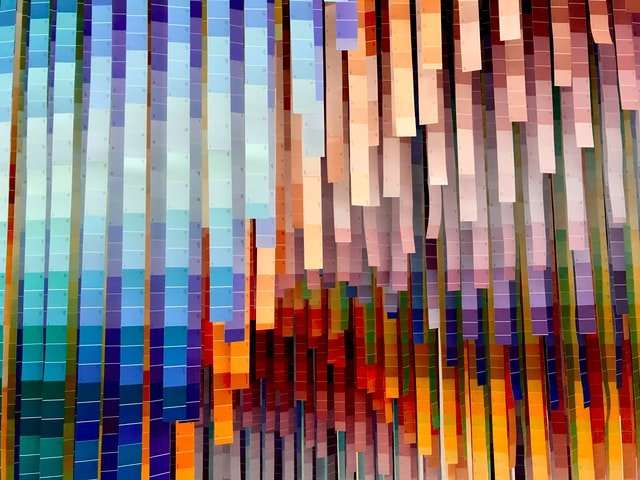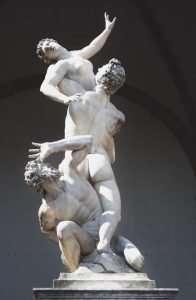If you want to buy folk art, how can you tell if you’re getting the real thing?
Talk to experts. Folk art is not a single kind of thing. It’s a category made up of many different things, and each kind has its own experts. Some kinds of folk art have experts that are well established and easy to find; others have experts who are still developing their field or working in relative isolation. There are people who have been studying carousel horses since they were little kids and know everything there is to know about them; there are other kinds of folk art where nobody has written a book yet and it will take some time of digging to find out who the leading experts are. There are experts on textiles and furniture, ceramics, Native American arts and crafts, Southwest arts, Southeast Asian arts and crafts, African arts, European folk art (including Russian, Italian, Dutch, Spanish), Scandinavian folk art, Central Asian tribal arts – there’s a huge range of stuff that comes under the heading “folk art.” There are hundreds of kinds of folk art in America alone.
There may not be an expert on the specific kind of thing you want to buy – but that doesn’t mean it’s fake! It just means it’s new.
We decided to start this blog because we’ve noticed a lot of people are starting to decorate their homes and offices with what we think is fake Folk Art. We’re not sure why this is happening, but there seem to be an increasing number of stores that sell products that look like they were painted by an artist who had never seen a real piece of Folk Art before.
Why is this bad? Well, for one thing, it can make people who are actually selling authentic Folk Art feel sad. I don’t want anyone feeling sad.
For another thing, when you buy something that looks like a piece of Folk Art, but isn’t really, then you’re helping the market for fake Folk Art grow. If you bought something that wasn’t real Folk Art and then found out someone was trying to sell real Folk Art over the internet, say on eBay or Etsy or at a gift shop or something, you’d probably feel kind of bad about it.
This is our way of helping make sure that doesn’t happen.
If you see something hanging in someone’s home or office that looks like Folk Art but doesn’t have our seal of approval, please let us know about it! We want to know about these things. It’s okay if
As you can see in our Folk Art Gallery, there is a lot of it available for sale. But how do you tell if what you are buying is really genuine Folk Art?
Here are some tips to help you spot fake folk art from the real thing.
1.) The Price is Right:
Consider the following:
a 1) Fake: When you walk in a store and buy a piece of “folk art” for $19.99 what you are paying for is not the handcrafted piece itself but rather the “story” behind it. The “story” about how the artist was discovered in the wilds of New Guinea or the Appalachian Mountains or some other exotic location and then brought back to civilization and encouraged to create his or her art with the support of generous patrons like yourself. Therefore, when pricing folk art, one must consider that there is also an important “story” component as well as an artistic component. In fact, if one thinks about it, he or she realizes that there is no difference between a painting by Van Gogh sold at Sotheby’s which fetches thousands of dollars and a painting done by an anonymous craftsman which sells for $19.99 at Walmart. Both are artistic creations which become more valuable with the right
In the past decade or so, the term folk art has become a buzzword, used on everything from teapots to vases to posters. No longer do we say craftsman or artists; instead we call them folk artists. Folk art is different from fine art in that it is created for the everyday person and not for galleries or collectors. Instead, it is made for use by the person who buys it (although, of course, you can buy and sell folk art as well).
A lot of what gets bought and sold is clearly fake and mass-produced, but there are plenty of companies out there making money by selling fake “folk” art. The best way to find out if something you’re buying is real is to learn how to recognize fake items.
To start with, look closely at the item you want to purchase and ask lots of questions about its history. Folk art is generally made by an individual artist creating one-of-a-kind pieces that reflect their own unique history. If you hear a story about a piece that sounds too good to be true, then it probably isn’t true. For example, if someone tells you that a piece was found in an old barn and that no one knows who made it, then you should be
Folk art is a tricky thing. It’s not always easy to spot what’s real and what’s fake. If you’re looking for folk art for your home, you may get taken for a ride by someone trying to sell you cheap imitations. The fakes may look okay to you, but that doesn’t mean they’re worth anything.
There are a number of ways to tell if something is genuine folk art or has been made recently by someone trying to pass it off as the real thing. The best thing to do is to hire an expert who knows what they’re looking at. But here are some ways you can check yourself.
The term “folk art” is used to describe art that is made by people who are not professional artists. The definition of folk art can be very broad, but it’s generally accepted that if the artist was not trained in fine arts and did not make a living from making art, then he or she was an artist of some kind.
When we buy folk art, we are buying a piece of someone’s life and culture. We are also buying their story, their history and even their philosophy. Because they were most likely not taught to make folk art, the piece you purchase should reflect the person’s creative spirit and the culture that person lived in.
Because folk art is usually passed down from generation to generation, each piece is a little different than others. Some pieces may be similar to others around them at the time they were created but no two are exactly alike. There’s no right or wrong way to make a piece of folk art as long as it reflects the creativity and freedom of expression that comes with being an artist who does not have formal training.
Authentic Folk Art Pieces Have Character.
Folk art pieces have character because the artists who create them do too! They have unique personalities reflected in their creations. They aren’t following strict rules or patterns
Written by: Nigel Edwards


